We may earn commissions when you buy from links on our site. Why you can trust us.
Portable CD Players Make a Comeback, with These 4 Models Out Front
A recent Wall Street Journal feature touted new interest in CDs and portable players among young people. The trend is largely explained as an embrace of less-complicated tech that’s also fueling a revival of flip phones and dedicated point-and-shoot digital (and film) cameras.
Like that other really big comeback kid, vinyl records, CDs do offer a healthy consumer retort to the fleeting nature of streaming music – intangible content that’s here today, gone tomorrow when your subscription lapses or the streaming device maker ends “cloud support.” Logitech has already given a kiss-off to its Squeezebox and UE Smart Radio streaming devices after an 18-year run. Sonos threatened to do the same with “S1 platform” products made prior to 2015, then quickly reversed as customers howled. Bose will end support next year for its first-generation SoundTouch streaming audio devices rolled out from 2013 to 2016 and sold until 2022. (Second gen streaming products working with the Bose Music App, first introduced in 2018, are still alive and well.)
As a music fan who browses the merch table at clubs, concerts, and festivals, I can attest that compact discs are still a happening thing. Especially appealing to indie artists as a fan-building and money-making proposition, these silvery optical discs are far less expensive to make and market than vinyl equivalents. DIY-music makers can burn and wrap home-recorded CDs for less than a buck or order a bunch of nicely finished packages for less than $2 each. The discs can then be profitably sold for $10 and up, a far cry from the $20 to $40 price sticker slapped on (expensive to master and press) vinyl platters. Yet CD proceeds are much better than the pennies bands get on streaming services.
As for those news reports of vinyl albums outselling CDs, I’d argue that the findings are skewed. The Recording Industry Association of America does not count sales of small (or no) label albums, unless their marketers cough up a fee and submit certified sales reports. And unless they’re moving quantities likely to warrant “Gold” and “Platinum” Record Awards (500K and a million sales, respectively), why bother?
Read more: Streaming in 2025 Isn’t the Bargain It Used to Be
With vast numbers of “pre-owned” titles priced right at $1.99-$3.99 a pop, used CDs are still a “healthy business,” a veteran floor manager at the legendary Princeton Record Exchange in New Jersey told me on a recent visit. And with good reason. When handled with a modicum of care, CDs retain their original, pristine sound quality. The laser pickup in a CD player does not touch, and so cannot scratch or wear down the data pits in an optical disc, the way a raggedy old needle riding in the grooves of a vinyl record can.
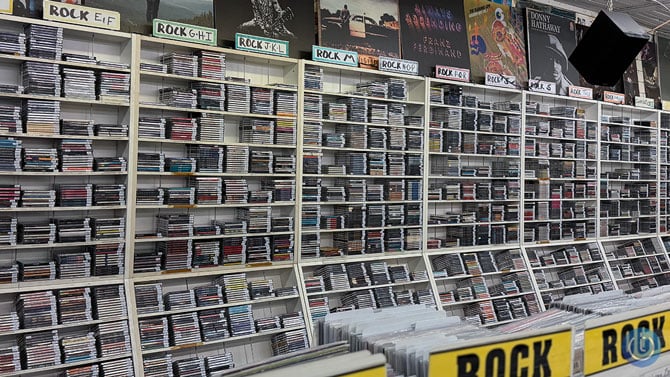
And for this audio tech tracker, the really big news is the complimentary surge in innovations I’ve been spotting in new-gen CD portables. While mainstay brands like (CD co-developers) Sony and Philips, Panasonic, and JVC have abandoned the category, a host of models spawned by clever Chinese makers are now lighting a new fire under the format, modernizing the species to make it fresh and relevant.
What’s Cooking in CD Players
Bluetooth connectivity tops the enhanced feature list in all the new models. No longer must CD players be tethered to wired earphones, though there’s still a headphone jack option in every new portable. Now a liberated user can plop the player down and throw the music wirelessly to Bluetooth-enabled earbuds or speakers located 25-30 feet away, as I did to ripe, room filling effect with a stereo-mode enabled pair of Bose Soundlink Flex (2nd gen) portable speakers.And for use in current/recent car models – almost all lacking music transports - some new-gen CD portables can also output their music to the in-dash entertainment system via low-power FM band radio signals.
Today’s CD portables are more energy efficient and eco-friendly. You can run most for 10-14 hours on a lithium-ion battery charge, then keep the music going (and recharge the battery) by plugging the player’s supplied USB-C cord into the same charger you use for your phone. So you’ll no longer owe your soul to the Energizer Bunny, a common complaint when CD spinners burned through disposable batteries after just four to six hours of use. Such polluters!
But wait, there’s even more. Some new-gen players invite you to stuff a MicroSD memory card into a side slot to copy (and then play back) tracks from discs you’ve borrowed from friends or the library. Cards loaded with MP3 music files from your computer are also welcome here.
Wondering which new age player is right for you? Maybe I can help. After weighing specs and user reviews of multiple units selling for under $100, I’ve nabbed and listened extensively to four I can recommend for a variety of reasons and applications.
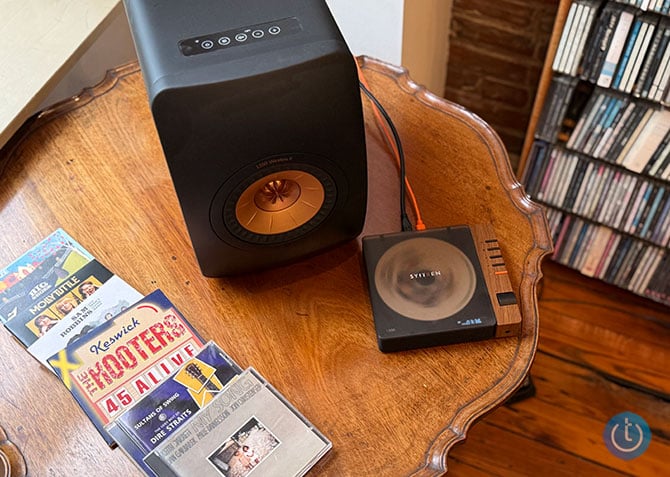
Best Home Stereo Addition: Syitren R300
Have you simplified your sound system to a compact smart speaker or two that pull content from streaming sites? If you’re holding onto some discs for sentimental reasons consider adding the Syitren R300 CD player, currently priced at $99.87 (regularly $119.99), to exploit those CD treasures and also enjoy new discs you’re nabbing to support current artists.
In its black-and-brown “wood grain” version, the Syitren looks like a component from a compact “micro” system of yore, takes up very little tabletop space, and is easily controlled from above. Note the catch-free, flip up lid and minimalist top-mount controls. (None of our new-gen CD players offer a remote or app control.)
Best news for audiophiles: The Syitren R300 sports an optical line output – ultra rare in the CD portable species – in addition to a conventional headphone/audio-out jack. This fiber-optic cabling option lets you transfer music from a disc in its pure, unadulterated digital form to a system with an optical input and on-board digital-analog converter. Guaranteed, that’s a DAC superior to any packed in a CD portable.
I made just such optical connections to my treasured KEF LS50 Wireless II powered speakers residing in the living room and likewise to a quite fine, ultra compact NAD C700 BluOS Streaming Amplifier that’s connected elsewhere to Q-Acoustics 3020i speakers. In both cases, the Syitren-spun versions of my favorite reference recordings (think Dire Straits, Van Morrison, Keith Jarrett, Steely Dan) sounded even a tad more detailed and airy than the pristine renderings pulled down by the KEF and NAD devices from Qobuz, arguably the most esteemed high-resolution streaming service.
No Sonos streaming gear packs an optical input, drat, but I was able to connect the Syitren’s reasonably good-sounding headphone output to the analog line input on a Sonos 5 speaker, with pleasing playback results.
A Syitren R300 spins for six hours (less than the current category norm) on its rechargeable battery. Still, I would not choose this player as a travel companion, anyway. Its tiny display screen and minimalist controls make on-the go use and connecting to Bluetooth devices difficult. And while the open-wide lid makes disc loading/unloading easy, I fear its lightweight nature would not survive being tossed about.
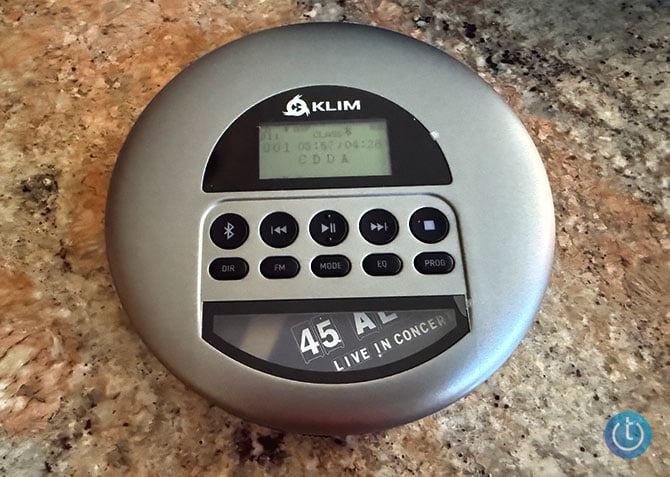
Best Value: KLIM Nomad
There’s a whole lotta goodness going on with the KLIM Nomad portable CD player in terms of design, performance, features, and accessories. And wow, is it priced right. I’ve spotted variants of the player priced as low as $39.97, though I paid (ok, overpaid) almost $60 for a spiffier looking, light gray-toned KLIM Nomad model billed as “New Version.”
At the lower asking price, this seems to be one of those brand-building products where the maker is “losing money on every sale but making it up in volume.” Or at least shaving profit to buy market share and recognition.
While weighing just 8.6 ounces, the Nomad feels solid, sturdily built. For even more protection (and value), KLIM throws in a free carrying case and a surprisingly decent set of wired ear buds that cling to each other magnetically to prevent tangling. Also unique: It’s the only player in the bunch fitted with two headphone jacks – so you can share the music with a friend. Or you can use the second jack with the wired buds plugged in to function as a reception-improving FM antenna (highly recommended). That works if you’re wearing them or not.
Read more: AirPods Pro 3 vs Bose QC Ultra 2: Which Earbuds Win?
A rear-lit monochrome LED screen and backlit buttons make the features fairly easy to operate, though I wish the instruction manual were more thorough. A rare rear lockout switch disables the controls so you won’t inadvertently bump ‘em and interrupt the music while on-the-go.
Both Bluetooth and FM outputs delivered CD music to the in-dash Bose sound system in my 2016 Mazda CX3 reasonably well. The KLIM also made a rewarding Bluetooth connection to Shokz Open Fit 2 earbuds and via the FM transmitter circuit to an old school Tivoli tabletop radio.
A dedicated EQ button lets you tune the music with a variety of nicely contoured tonal modes – “Classic,” “Pop,” “Jazz,” “Rock” and “BBS” (Bass Boost System), though I often felt the player sounded best with the EQ “off.”
Even with a connected antenna, FM signal reception was disappointing in my urban (high rise-obstructed) neighborhood: hissy on the strongest stations and virtually non-existent for locals in the lower-frequency, public radio sector of the band.
After some trial and error, I learned how to copy single tracks from a spinning CD onto an installed MicroSD card. Attempts to transfer a full disc to a card in a non-stop recording session failed repeatedly, however. Curiously, the marketing materials for the KLIM Nomad only tout its memory card playback skill. There’s no mention of a recording option.
A clear plastic section on the KLIM’s lid proves both entertaining and a little disconcerting. You‘ll watch the disc spin for a while, then see it suddenly stop while the music plays on! That’s a reminder each track is being quickly captured and stored in a buffer to enable the 100-second shock- and skip-protection common to these new-gen portables. The only downside? You’ll sometimes hear an unexpected pause between tracks on concert recordings where the music and applause should play straight through.

Best Bedside Companion: Monodeal MD-709
Boasting built-in speakers and a programmable sleep timer (15 minutes up to two hours), the Monodeal MD-709 CD player is the portable you’ll most want to plop on your night table. Spotting it as a “limited deal” offering for $55.99, normally $69.99, I also admired its bright, 2-inch TFT color display, carousel-ing screen menu, and backlit control buttons – best of the bunch at spelling out what’s going on (or possible to do) with this multi-tasker. The Monodeal’s user manual is likewise the most thorough and helpful for juggling all the new-gen features – including recording from a CD to a MicroSD card.
While a mite clunky, Monodeal’s squared-off 11.8-ounce cabinet has a sturdy feel and enables the lid to snap open (with a dandy, top-mounted unlock button ) almost as wide as the Syitren’s, for easy install/removal of a disc.
The cabinet design also offers enough resonating room inside for the built-in, up-firing stereo speakers to output a decent mid-fi sound when playing in a quiet environment. Good enough to soothe you to sleep.
Sound playback through those Bluetooth-connected Shokz Open Fit 2 earbuds and hard wired Beyerdynamic DT-990 Pro 250 OHM Studio Monitors was smooth and sweet, though a smidgeon less detailed than what the KLIMs delivered with the same tracks from Van Morrison’s A Night in San Francisco concert set.
I couldn’t get the Monodeal’s Bluetooth circuit to handshake with my car’s stereo - a fairly common problem with these new-age BT CD players. (There’s a warning to that effect in all of the portables’ operating manuals.) But not all was lost. I was able to pump decent FM-converted music to my Mazda from the Monodeal. And incoming reception of local FM radio stations was better than on the KLIM, even without a connected headphone cable/antenna.
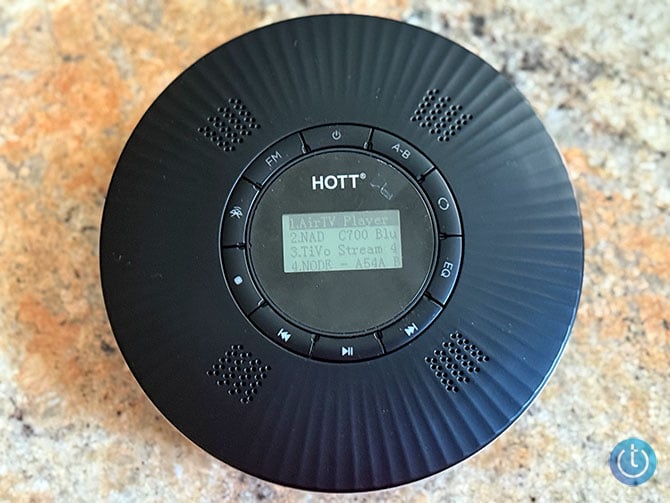
Best for Kids and for the Car: HOTT C228
Living up to its branding, the HOTT C228 CD player ($74.99) is the most stylish of the new-gen portables – the one my 15-year-old assistant reviewer Leah wanted to claim.
Tapered at the edges and bulging a bit in the middle, with a ribbed lid for better gripping, the HOTT is the easiest of the bunch to slide in and out of a book bag, jacket pocket, or glove compartment. Note that almost all the controls (save the volume wheel and top release) are located on the lid, including the power on/off button. So a user is more likely to tap it habitually and not run down the battery prematurely. (All four players in our review do shut off automatically after sitting idle for a half hour.)
Performance-wise, I found the HOTT a cut below the competition &- more in need of matching to efficient headphones and shifting the EQ mode (from disc to disc) to achieve a pleasing tonal balance. (The included earbuds are just OK.)
This player’s also a tad more obstinate when it comes to Bluetooth pairing. Sometimes I’d put the HOTT into “search” mode, and it would summon up a list of linkable BT devices a floor away while ignoring “ready to pair” earbuds sitting right next to the player! (Word to the wise: The HOTT connects most readily with brand-new Bluetooth buds/headphones that haven’t been paired previously with other devices. If the buds/headphones are already paired to a smart phone, you may have to cut that link. Disconnect them with a “forget this device” tap on the phone’s “My Devices” list.)
On the bright side, the HOTT C228 did find and connect with my Mazda’s infotainment system via Bluetooth without too much fussing. It also beamed better than the rest to the car radio via its onboard FM transmitter. So it is especially good for the road.
While lacking its own FM reception, this HOTT model does have four small on-board speakers evoking a classic “transistor radio” sound. Which isn’t saying much.
The Bottom Line
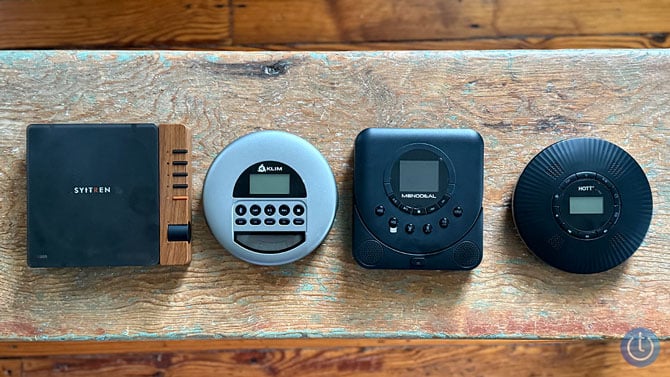
From the left: the Syitren R300, KLIM Nomad, Monodial MD-709, and Hott C228.
The Syitren R300 CD player (around $100) is the pint-sized CD player that’s going to get the most use in my house. The Monodeal MD-709 CD player (about $60) is the one I’d probably bring along on a vacation. If you’re looking to gift someone with a retro music player this holiday season, a KLIM Nomad (under $40 in basic black) offers the best deal of the bunch. But you might make a teenager happiest with the cute little HOTT-ie (under $75).
[Image credits: Jonathan Takiff]

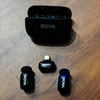
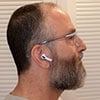






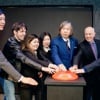

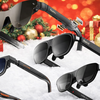




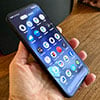
From Michael Antonoff on November 10, 2025 :: 3:59 pm
JT,
Really nice piece of hands-on reviewing and analysis. My only suggestion: Next time take one of these CD players out for a run around the Central Park Reservoir or along the Schuylkill River. I’d be curious if the buffers provide skip-less play even when you inadvertently raise the device to scratch an itch. The real world, especially for portables, does not reside on a recliner.
Reply
From Jonathan Takiff on November 10, 2025 :: 5:53 pm
Thanks for the feedback Michael. I did do some strolling about mit players without sonic interruptions. But jogging for more than 100 seconds (their shock/skip preventing buffer limit) is not my motivational speed of choice, nor the players! Reason to invest in a comeback compact cassette “Walkman” too?
Reply